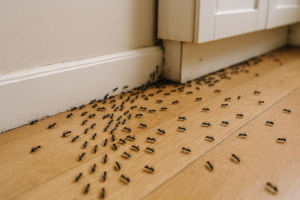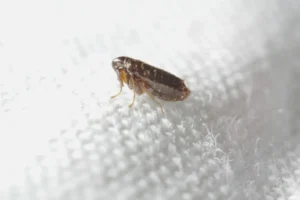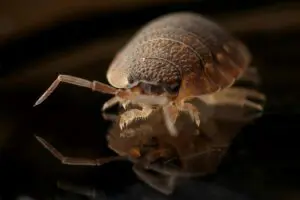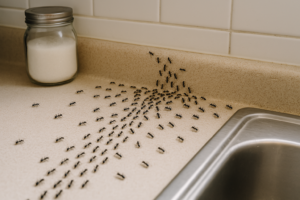
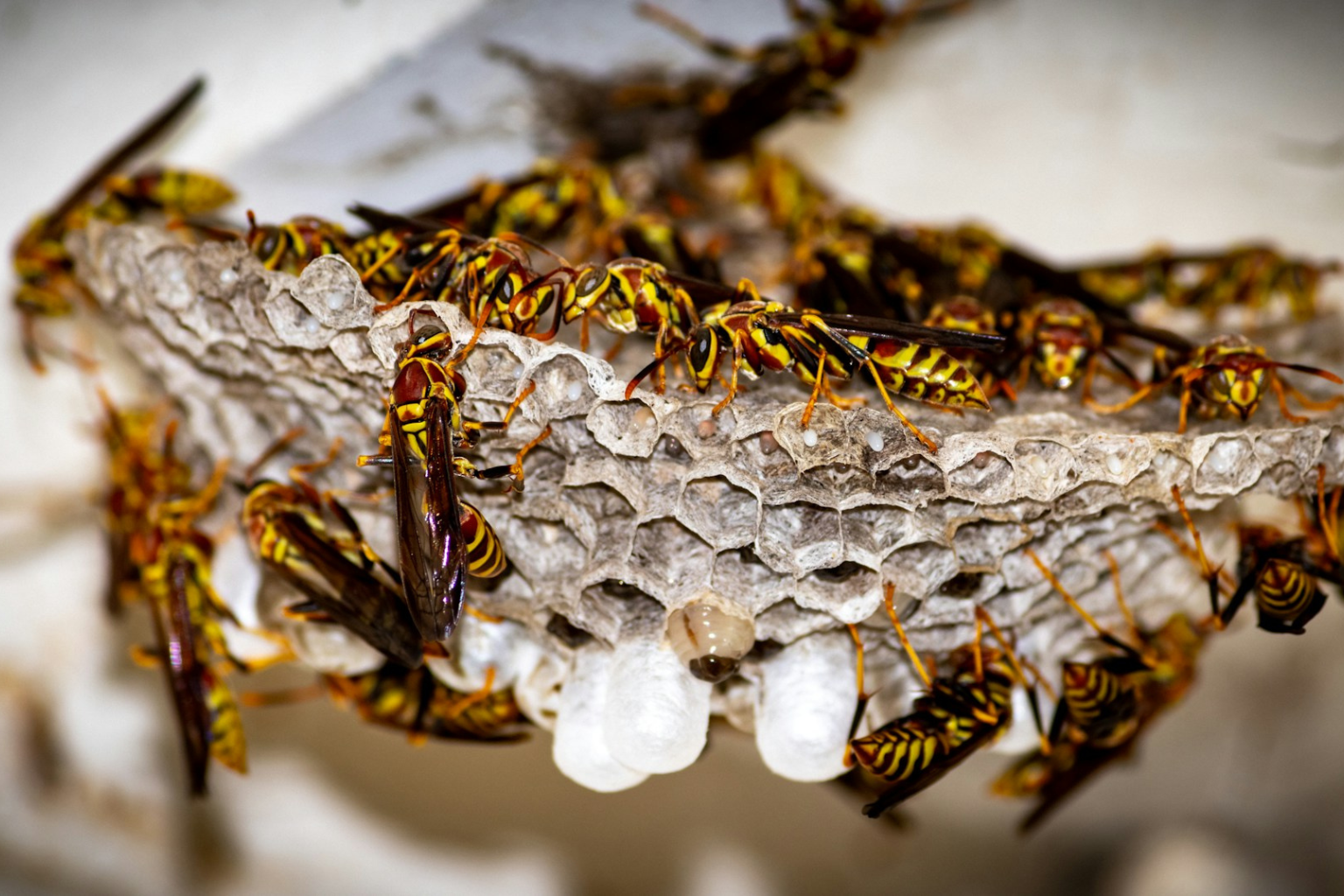
What Does a Wasp Nest Look Like? A Summer Guide for First-Time Homeowners
Summer usually evokes thoughts of sunshine and barbeques but unfortunately, it also conjures images of wasps. Spotting a wasp nest early on is important for first time homeowners as this spotting can save you from a lot of hassle in the future.
It is important to remember that wasps are not just an annoyance, their nests actually pose serious risks and this is particularly true in the warmer months. With this in mind, it is important to know what you should look out for and what you should do if you find one. Whether you’ve just moved into your dream property or you’re settling into your first summer as a homeowner, this guide will help you understand what a wasp nest looks like, where they’re usually found, and how to act promptly if you notice signs of wasp activity.
What Does a Wasp Nest Look Like?
Wasp nests can vary slightly in appearance depending on the species, but they share several common characteristics. Let’s take a closer look:
- Shape and Structure: Wasp nests are commonly round or an oval shape. In their early stages, they are usually the size of a golf ball, but by mid-summer, they can grow to the size of a soccerball (and in some cases, larger). The texture of a wasp nest is often layered and can be compared to crumpled paper or cardboard.
- Material and Color: Unlike bees, which produce wax, most wasps create their nests by chewing wood fibres mixed with their saliva. This produces a grey or light brown papery pulp and is what gives the nest its paper-like look and rough texture.
- Open vs Enclosed: Some species of wasps, like yellow jackets, build closed nests while other species such as paper wasps will create open nests where the individual cells are clearly visible. Both types have a noticeable entry point where wasps enter and exit, which is a good indicator of the nest’s activity level.
- Entry Hole: Most nests will have a small, round opening where wasps fly in and out. If you see movement around a single area, this is often your first visual cue that a nest may be nearby.
Where Are Wasp Nests Usually Found in Your Home and Yard?
When it comes to identifying wasp nests - knowing where to look is the first step. Wasps prefer sheltered areas so that their nests are protected from wind, rain, and predators. With this in mind, first-time homeowners should pay close attention to the following areas when trying to spot a wasp nest:
- Roof Spaces: These are ideal nesting spots due to their height and seclusion. Make sure to inspect under the eaves or in roof corners.
- Sheds and Garages: Detached buildings like sheds and garages often have small openings that wasps can take advantage of. These structures provide warmth and security which make them perfect for nest-building.
- Under Porches and Below Decking: The underside of a porch or deck is another favorite spot for wasps. These areas are shaded, dry, and rarely disturbed, offering ideal conditions for a growing nest.
- Lofts and Attics: Loft spaces are particularly attractive to wasps in early spring and summer. If you hear buzzing or notice wasps in upper rooms, it may be worth checking your attic space.
- Around Windows and Doors: Wasps may build nests in crevices around window frames or doorways, especially if there are gaps or holes in the structure. Look out for any consistent insect traffic in and out of these areas.
How to Spot the Early Signs of a Wasp Nest in Your New Home
The earlier you spot a nest, the easier it is to deal with.
Here’s what to look out for:
- Increased Wasp Activity: One of the most obvious early signs is an uptick in the number of wasps near your home. You might notice them congregating in certain areas or flying in and out of a specific spot.
- Wasps Carrying Materials: If you see wasps gathering wood fibres or flying back and forth with small particles, they may be in the process of building a nest. Keep an eye on where they’re heading – that’s likely where the nest is forming.
- Minor Structural Damage: As wasps chew wood for nest-building, you might notice subtle signs like scratches or damage to wooden fences, walls, or furniture. While this damage is usually minimal, it’s a sign of active construction.
- Buzzing or Humming Sounds: In quiet areas like attics or wall voids, you may hear a faint buzzing noise. This often indicates a nest nearby, especially if the sound is persistent and centralised.
Why Is Summer the Prime Time for Wasp Nest Activity?
Understanding wasps behaviour in the summer time can help you stay one step ahead.
- Rapid Nest Expansion: Wasp colonies start small in spring, with a single queen laying the foundation. By mid to late summer, the nest may house thousands of workers. This rapid expansion increases the risk of human encounters.
- Warmer Weather Boosts Activity: Warmer temperatures make wasps more active and aggressive, particularly if they feel their nest is under threat. This means nests can become more dangerous as summer progresses.
- Food Sources Are Plentiful: Wasps feed on sweet substances and proteins, which are more abundant during summer barbeques, picnics, and garden gatherings. This brings them closer to humans – and increases the chances of stings.
For first-time homeowners, it’s especially important to be vigilant during these months. Regular inspections and awareness of wasp habits can help prevent infestations before they escalate.
What to Do if You Find a Wasp Nest in Your New Home
If you suspect or confirm a wasp nest on your property, avoid the urge to deal with it yourself.
Here’s what to do:
- Do Not Disturb the Nests: Attempting to remove or destroy a wasp nest without the proper knowledge or equipment can provoke the colony and lead to aggressive behaviour. This is especially dangerous for anyone with allergies.
- Keep Children and Pets Away: Limit access to the area where the nest is located. Wasps can become highly protective and attack in groups if they feel threatened.
- Call a Professional Pest Control Service: The safest and most effective course of action is to contact a licensed pest control provider like Excel Pest Services. Our trained technicians will assess the situation, identify the species, and remove the nest using appropriate methods.
- Monitor for Secondary Nests: Even after removal, it’s worth monitoring the area for signs of new activity. Some species may attempt to rebuild or relocate close by.
Preventing Wasp Nests in Your New Home This Summer
Prevention is key and easier than removal. Here are some practical steps you can take to keep wasps from settling in:
- Seal Entry Points: Inspect your home for gaps, cracks, or holes in eaves, soffits, and walls. Use sealant or mesh to block these entryways, especially in roof spaces and wall cavities.
- Clean Up After Outdoor Meals: Sweet drinks, fruit, and meat scraps attract wasps. After hosting gatherings, promptly clean surfaces, cover bins, and store food waste securely.
- Limit Standing Water: Wasps need water to survive. Repair leaky outdoor taps and ensure gutters and drainage areas aren’t collecting stagnant water.
- Use Natural Repellents: Peppermint oil is a known deterrent. Mix a few drops with water in a spray bottle and apply to potential nesting areas. Citronella, eucalyptus, and clove oil can also be effective.
- Hang Wasp Decoys: Wasps are territorial. Hanging a fake nest can sometimes discourage them from building nearby.
Stay Vigilant and Wasp-Free This Summer
Wasps may be a part of summer life, but that doesn’t mean they need to be a part of your home. By learning to identify a wasp nest early, understanding their seasonal behaviour, and taking proactive steps to prevent infestations, new homeowners can enjoy their first summer with greater peace of mind.
And if you do find a nest, don’t panic, help is readily available. At Excel Pest Services, our experts are trained to handle wasp infestations safely and efficiently. We offer detailed inspections, effective treatment plans, and preventive guidance tailored to your property.




